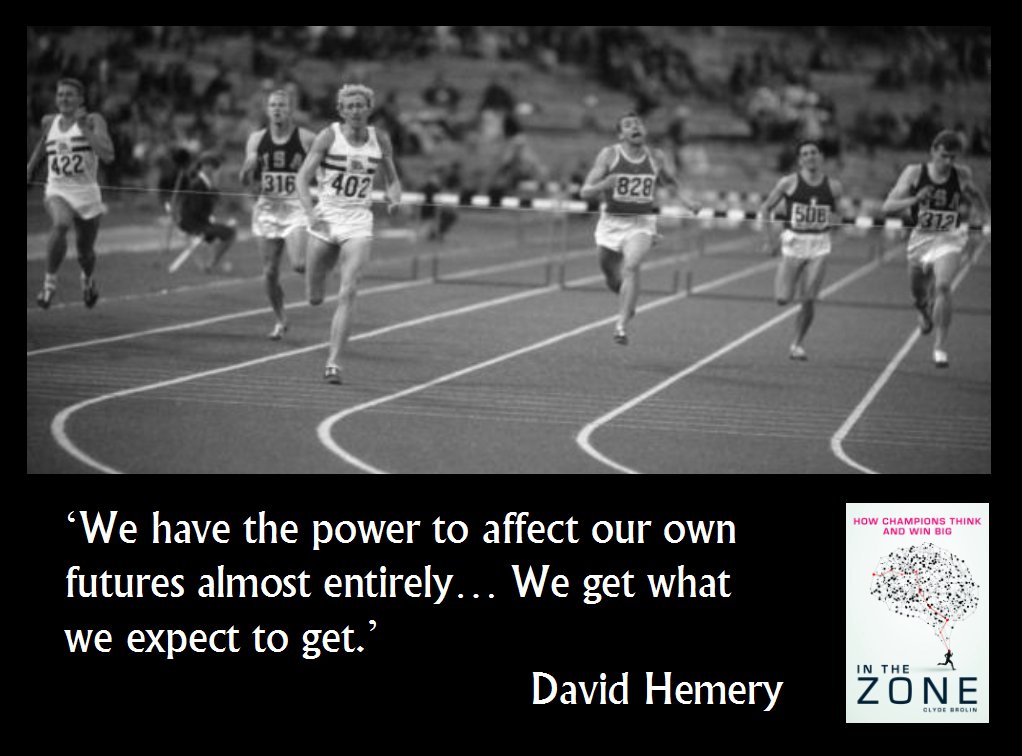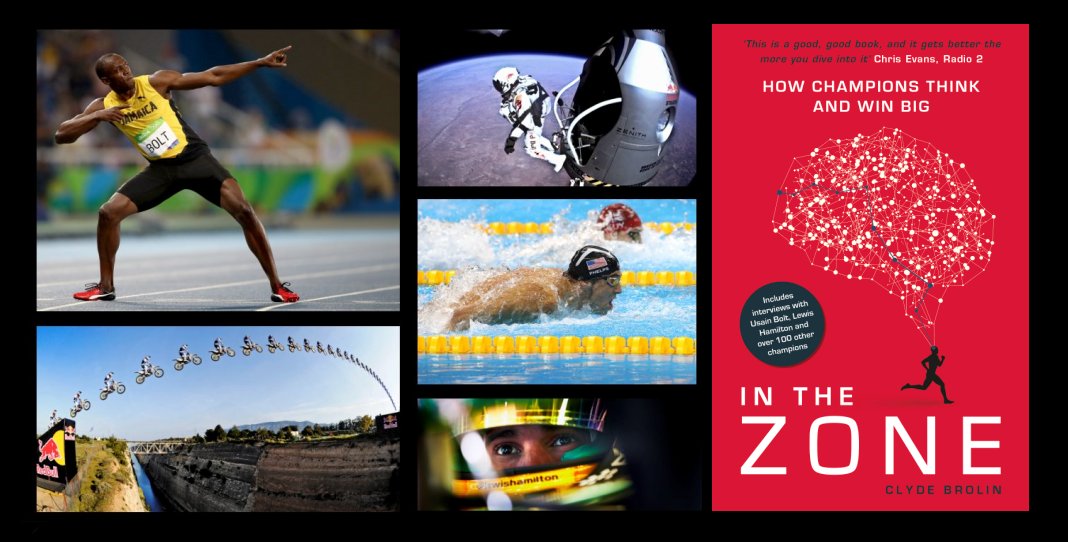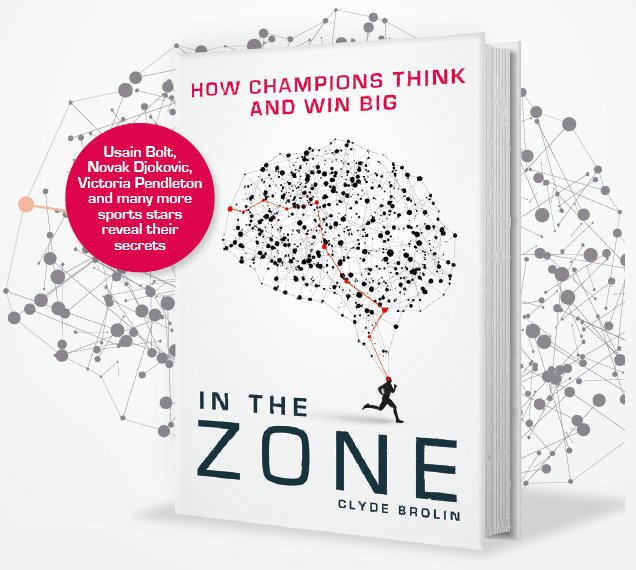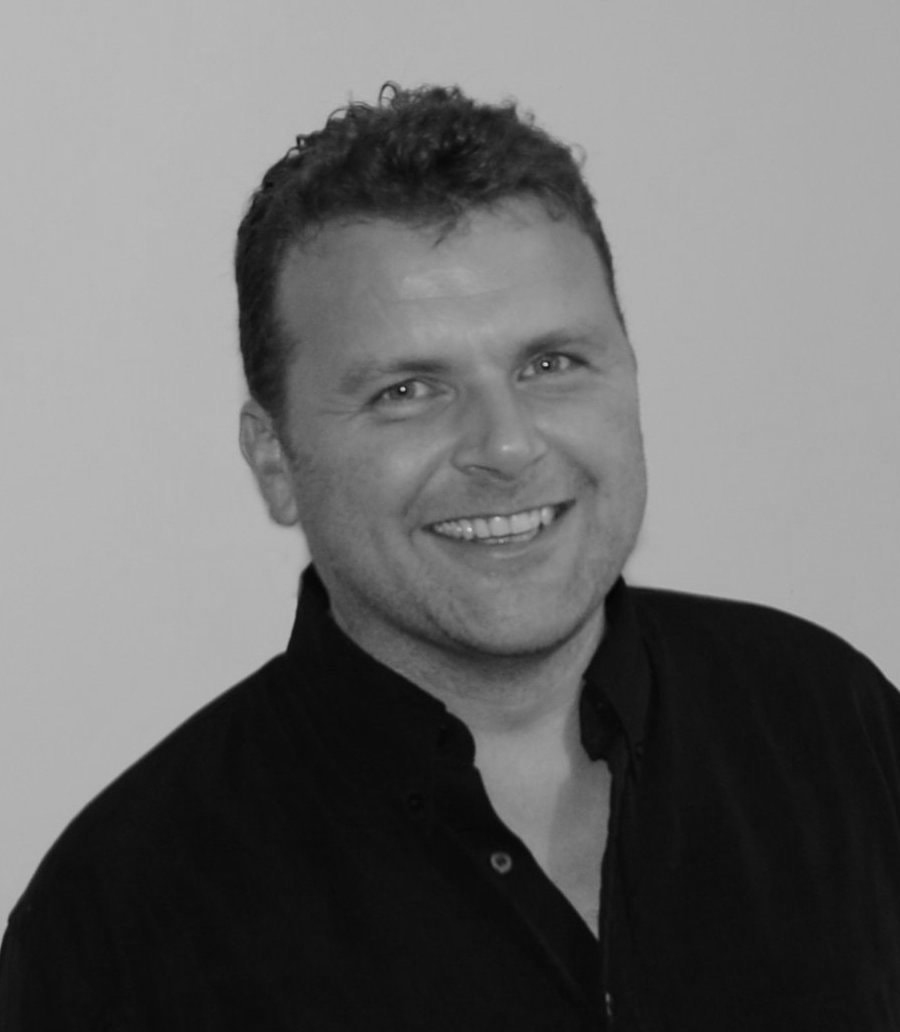|
Austria’s Franz Klammer prevailed over a golden era for skiing, sealing a record five World Cup titles plus gold in the blue riband men’s downhill at the 1976 Olympics after a truly wild ride (see video below…) The secret to ‘The Kaiser’s’ success, which included one matchless run of ten straight wins, was that he didn’t consider his opponents to be his rivals. No, his main adversary was about a thousand times taller. ‘I won every race in one season – except one when I lost my ski,’ he gleefully recalls in the book In The Zone: How Champions Think and Win Big. ‘That means you have to be better than the best one of the others. You always know one of these guys will have a very good run because they’re all after you. But I’m not racing against any person, I’m racing the mountain. ‘When I was winning all the races, I just knew I was ahead of everything. So you’re the boss in the ring. You know how you want to do it and you can just conquer the mountain. Then you get into the Zone. This happened to me a lot, and those moments almost always led to victory because you’re the leader. It’s not the skis or the mountain telling you what to do. You’re mastering the mountain.’ It takes a big man to take on nature but Klammer offered his mighty rival the highest respect imaginable. He didn’t just show up on the day and expect mastery to fall into his lap; instead it was a steady build-up that began in the privacy of his mind. ‘The most important thing is to figure out what you have to do to perform,’ he says. ‘It’s not up to you when you have to race so you have to be totally consistent. If the race is at midday on Saturday you cannot afford not to be on form then. You have to be spot on. So I had a mental build-up during the week, like gradually pulling back a bow and arrow. When I arrived for the course inspections on Wednesday I started pulling the bow back, building up the tension more and more until you are ready to go. Then on Saturday I let the arrow fly. ‘I always used to visualise the course too. When I went to bed I lay down and went through the downhill, then again the next morning, visualising what I was going to do. You learn that as you go through your career. Once you really have the feel the hard bit isn’t the turns, because you’re always in action, but the flat. If a flat section takes 20 seconds you don’t know how long that takes without a clock. Still, when I was really in my heyday I could imagine the whole course within three or four tenths of my actual racing time. Then when I got to the start I’d do it all different because if you stick to the line you are too slow…’ If a relaxed attitude sounds like a chink in the armour for the other competitors to exploit, they will be sorely disappointed. Such a playful mindset allows the legends to set their subconscious free. That’s when they really start to fly. ‘For me being “in the Zone” is when everything is in slow motion so you have all the time in the world,’ adds Klammer. ‘In skiing you have certain crucial sections of the course when you really have to get it right. Afterwards it is flat so if you make a mistake you will lose a lot of time and you won’t win the race. But when you’re in the Zone, you have a very clear picture ahead of you and you see all these little details. So you can go for it. It’s a special feeling when you’re in full flow…’ This is an exclusive extract from the book In The Zone: How Champions Think and Win Big
0 Comments
If we want to understand the power of dreams – and how greatness always starts in our own heads – the all-time greats of sport provide all the evidence we need.
The world’s most decorated Olympian Michael Phelps collected 28 swimming medals over a record-shattering period lasting a day shy of 12 years. Of those, 23 were gold: he won his first on this day (August 14) at the 2004 Athens Games and his last in Rio on August 13, 2016. The foundation to his success was a brutal training schedule of countless repetitions – averaging seven miles a day, 365 days a year. Phelps started young too, spending his early years permanently around a pool. By the age of 11 he was swimming two and a half hours every day. He was just 15 when he made his Olympic debut at Sydney in 2000, reaching the 200-metre butterfly final but missing the medals. Just months later he broke that world record and the deluge began: his total now tops the entire collection of over 150 Olympic nations. The American was fortunate to grow up into the perfect physique for swimming – a long trunk and a wide arm span – but it’s in his head that he shines brightest. Such a staggering, history-altering career would never have come to fruition if Phelps hadn’t worked tirelessly to create vivid images of his races in advance, then steer his future accordingly. Thanks to rigorous mental training with coach Bob Bowman he learned to write his goals down, specifying each target time to a hundredth of a second. Even in his early teens he soon found himself hitting them precisely. ‘I started visualising when I was about 14,’ Phelps tells me in the book In The Zone. ‘It was all about thinking how a race could go, how you want it to go and how you don’t want it to go so you’re ready for anything. I found it could really help me to prepare. Visualisation is important so you don’t have any surprises. That means you can always stay relaxed. That was a big key in everything we did. Starting it at a very young age really helped me throughout my career.’ Visualisation is not just about being prepared for anything, it’s about shaping the future to fit the mould of your private vision. The greats start with a big vision, then they map out their route towards it by dividing it into smaller, more manageable goal-sized images. It helped that Phelps was also taught never to believe in limits. As such he always dreamt big, not settling for gold alone: ‘It’s crazy when I look back on my career because to me it feels like I’ve been living a dream come true,’ he smiles. ‘This is everything I thought about and dreamt of as a kid. It’s like: “This is real?” And it’s wild. Everything I’ve been able to accomplish is something I’ve always wanted and I’ve done everything I ever wanted to achieve. I wanted to change the sport of swimming and take it to a new level – and I have.’ Before his racing retirement Phelps, now a father to Boomer, started a foundation aimed at promoting water safety: ‘I still swim, but now it’s more for peace of mind. But there is still a lot I want to achieve. Spending time with kids is a passion of mine. Putting a smile on a kid’s face and seeing them having fun always puts a real smile on my face too. Now I want to help kids accomplish their dreams.’ The fact these successful ‘dream achievers’ are so keen to share out the secret is a lesson in itself… One thing the greats can’t help but learn en route to the top is that we are not merely passive beings being battered around the universe. Now they are desperate for the rest of us to realise we all - without exception - have the power within us to shape our own future. So where will your dream take you? Click here to hear more about the power of visualisation in Clyde Brolin’s interview on the BBC Radio 2 Breakfast Show with Chris Evans - five years ago today ‘The last second is what’s most special and addictive: when you stand on the edge, you look down and you still have the chance to turn around and walk away. That last particular second when you step off. Then you know you are on the way. You cannot return. You pick up speed and you accelerate so fast. A couple of moments later you pull your parachute, you land, you look back up at that big mountain and you’re still alive. For me this is total freedom.’
Some people really do seem born to fly. When Felix Baumgartner was just five years old, he drew a picture of himself parachuting to Earth with his mother Eva watching on from ground level. Felix gave Eva the drawing, only for her to hand it back to him when he did his first real skydive, aged 17, at a club in his home city of Salzburg. Felix then spent five years in the Austrian Army’s parachute exhibition team, building up his mastery of freefall. It was when he switched to BASE jumping that the haul of records began. His 1999 leap from Kuala Lumpur’s Petronas Towers was the highest from a building and Rio de Janeiro’s Christ the Redeemer statue was the lowest. This constant quest for greater challenges led to his big finale: the world’s highest ever freefall – from 24 miles up – in a bid to become the first human to break the sound barrier without an engine. This one wouldn’t come easy. Five long years of preparation for Baumgartner and his Red Bull Stratos team may seem excessive for a mere ‘stunt’ but this is the discipline required to go to the limit and beyond. The Austrian worked his way up with practice runs from 15 and 18 miles. Most crucially he was busy breaking the sound barrier over and over again – away from the public gaze. ‘I visualised this jump from the moment I heard about it,’ Baumgartner tells me in an interview for In The Zone. ‘I did it a thousand times in my mind – just like every other jump I’ve ever done. I lie in my bed and come up with a proper game plan. ‘I’m really good at pre-programming my mind and I always do this. I think about how it will feel, what it will look like. The more I think about it, the more it becomes reality. When I finally do it for real, 99 percent of the time it works exactly like I’d visualised and it feels the same way it felt in my mind.’ The aim of visualisation is more than just preparation; it’s about taking control of the future and tailoring it to our liking. By continually dreaming of his freefall from the edge of space Baumgartner painted a vivid picture and created a momentum in his mind that made success all but an inevitable consequence when he finally took one small step out onto his capsule’s external platform on October 14, 2012. ‘It’s the power of will and the focus you have,’ he adds. ‘When I was standing out on the exterior step it felt almost how I expected. This is the key. The more you can turn thoughts into reality, the better you are. Mental preparation is crucial: you have to ensure you find the right mindset for that moment. Then when you are finally in that position there will be no surprises. You pre-program your mind and it works exactly the way you expect. Most of the time…’ Pity the question Baumgartner is most often asked is: ‘What it was like up there?’ because the view was the last thing on his mind. He was in the Zone… ‘You’re so focused and determined you don’t see or hear anything around you,’ says Baumgartner. ‘In the first part of the jump I spun five times anticlockwise and 22 times clockwise. I didn’t think about anything else because I was so focused on stopping that spin. It was a lot of work and took almost a minute. For the rest of the flight I was more relaxed. At 5,000 feet (1.5km) I had to pull my parachute. Then I realised I’d broken the speed of sound.’ Ready for your own big one? The good news is Baumgartner insists we all have the ability to rise to any challenge, as long as we can silence the doubters: ‘I’ve met Neil Armstrong, Muhammad Ali, Sir Edmund Hillary – and it wasn’t easy for any of them. When they came up with their idea everybody looked at them like “What the hell is wrong with you? This is impossible. You can’t climb the highest mountain in the world…” So you have to focus on one goal and make the judgement: “Am I willing to go the extra mile and invest all the blood, sweat and tears to reach that goal?” If the answer is yes, go for it. That’s what I did and this is where it brought me. Everyone said I could not break the speed of sound. But I proved them wrong…’ To find out much more about how Felix Baumgartner’s record-breaking jump – including how he conquered his fears and coped with his mental demons along the way – read In The Zone: How Champions Think and Win Big ‘There is so much untapped potential in people it’s just incredible. It’s almost beyond belief, really. I feel it and I sense it through what I’ve experienced in my own journey. I’m from a humble beginning but the message of my story is that great things grow from small things.
'The magic lives inside every one of us, despite our environment, our struggles and our doubts. It takes courage to realise what that magic is, then to actually go out and try to achieve it. It’s the power of loving yourself, I suppose, and giving yourself a chance.’ In my years of researching the human being at the limit for In The Zone I’ve been privileged to meet over a hundred of the world’s biggest sports stars. But every now and again one of them sends me away with my head swimming. This time it is Australia’s national treasure Cathy Freeman, who has just summed up this entire book in a hundred words. The magic of elite performance is that it always starts out small: with a dream. By nurturing it, crafting it and loving it, sport’s champions show us all the untapped power of the human mind. When we believe in what we conceive, the Zone can guide any of us to achieve anything. And it’s not just about sport. More than simply a cliché, the Zone is the mental state required to perform at our own absolute limit in any field. This is the home of ‘genius’: where artists are at their most creative, where musicians produce their most sublime performances, where scientists make their breakthroughs. This doesn’t stop with the stars. Whether you’re a teacher, a chef, a nurse or an astronaut, if you’re taking an exam or cracking jokes in a pub, to find the Zone guarantees you hit your absolute best. You may not even recall how or why it went so right. Put simply, it all goes like a dream. The Zone can kick in at every level from a kickabout in the park to the World Cup Final. It is just a blissful state where all internal chatter disappears and we truly go with the flow. We assume conscious thoughts drive us on, but it is when we give our subconscious free rein to do its natural thing that we truly shine. That often leads to a performance at the maximum of our potential, albeit beyond what our conscious minds ever imagined possible. This limit rises in proportion to the hours of practice in the bank and the intensity of the occasion. Blend the Zone with supreme ability and a packed, expectant arena and you get fireworks. This book features plenty of those but the good news is that we all have enough spark to match any of them, if only we take the trouble to live the dream. ‘The great achievers, winners, inventors, musicians and painters have all been great dreamers,’ says mind coach Don MacPherson. ‘What’s exciting is that anyone can visualise. We can use it in life’s everyday challenges like school exams or a driving test. If you have to make a best man’s speech, first picture your audience in as much detail as possible, using all your senses: sight, hearing, smell, touch. See yourself delivering your speech feeling relaxed and confident. Hear the audience laughing and clapping, then coming up to congratulate you. ‘These mind movies turbo-charge your confidence because the subconscious doesn’t know the difference between the real thing and something imaginary. Like all skills, the more you practise the better you get. But your brain loves a target so give it a big one like a great success. When you have it burned into your subconscious mind, switch focus to the process by visualising how you’re going to get there, step by step.’ This book draws on the testimony of the cream of the world’s brightest dreamers and most focused schemers to show we all have a chance to be a magician. Anyone with a dream can follow these greats all the way to the top of the world by setting their mind unflinchingly on their own specific quest. How do champions think? They don’t. The original dream comes not from the head but the heart: conceive. No matter how long it takes, they don’t think they can, they know they can: believe. Finally, to truly peak they stop thinking at all: achieve. We all have this potential if we can stop suppressing it ourselves or believing others who haven’t yet learned this universal truth. When we finally pay dreams the attention they deserve, the payback is a sea change in everything from self-belief to self-discipline, self-knowledge to self-esteem. Then a realisation dawns that buried within each of us is the power to make any dream come true, even if the process may initially seem more of a nightmare… This extract is from In The Zone: How Champions Think and Win Big, out now We all start life as dreamers. Whether we picture our future selves as footballers, film stars or astronauts, we have a natural, effortless ability to transport ourselves into any reality we choose. Then we grow up – and most of us give up. That’s not entirely our fault. Parents and teachers usually mean well but rarely grasp the power their words have. The world’s most effective dream destroyer is the phrase: ‘You’ll never earn a living doing that…’ Ian Cartabiano is one of the lucky few who slipped through the net. The son of a toy designer father and an artist mother, he once saw his Dad draw a Ferrari Testarossa and promptly started doodling cars for himself – until, aged 12, he knew this was what he wanted to do. Forever. Thirty years later Cartabiano is still living the dream, having designed many of Toyota and Lexus’s most striking cars of recent years. And I was lucky to speak to him about his creative process, his moments in the Zone and more. Read the full article here. As part of this interview series, which will continue over the coming months, I also enjoyed having a chat with Lexus sportscar ace Jack Hawksworth (pictured above). He described the work he puts in on visualisation and other techniques to make sure he finds the Zone every time he gets behind the wheel. Read the full article here.
The world is drowning in fear right now.
Whether we are most afraid of a virus or the draconian global response to it, there is plenty to be scared of – and, thanks to relentless fearmongering everywhere we look, no escape. Hell, we’re not even allowed out. While we wait for some unspecified knight in shining armour to set us free, it’s pretty clear that we are supposed to be sitting here quaking in our boots. This is the message reinforced with every new statistic, every news broadcast: be afraid, be very afraid. But there is a critical life lesson nobody ever told us in school, one they aren’t telling us now either… What we fear, we attract. That’s because our thoughts have power. This is the principle underlying everything I’ve ever written about visualisation. Elite athletes have been using the positive side of this for 50 years. But it works both ways, good and bad. When we worry about anything – whether it’s running out of money or getting ill – we massively increase the chances that it will happen to us. Worse yet we have the ability to infect others – loved ones, friends, neighbours – with our fear, ensnaring them in our nightmare. And we don’t need to be within two metres of anyone to pass it on: we can do it over the phone, through Skype, Zoom, Whatsapp, Twitter, Facebook, Instagram, radio, TV, anything. As such it’s no wonder this fear has gone viral far quicker than any illness. Within the space of two weeks we have accepted being ordered to stay away from our fellow human beings lest we infect them, to the point that a high five is now an unthinkable act, let alone a hug. This is how we have been persuaded that in order to preserve life for some, the best response is to stop life altogether. For everyone. Now that really is a tragedy. There’s a reason why incarceration is a punishment – and why solitary confinement is the most brutal of all. Yet that is precisely what we have just inflicted on some of our most vulnerable people, not least the elderly who this is all supposed to be protecting. Then there are the millions who have suddenly been left without jobs or income, with all backup rapidly disappearing. But even on a less desperate, more trivial level we are all being robbed of life – and everything that makes it meaningful. Within sport alone we’ve seen the dreams of a planet of Olympic hopefuls evaporate, along with everyone else who has dedicated decades of their lives towards a big event in 2020. It’s not just the competitors; half the population of Liverpool have waited 30 years for a title their team richly deserves but is now irreversibly tainted. No doubt that’s funny to many, and Bill Shankly’s view of the relative importance of football, life and death may indeed be flawed. But what of the millions of needy kids all over the world for whom football (or basketball or skateboarding or boxing) was their only highlight amid the daily gloom? They really have lost their lifeline. Make no mistake: dreams matter. Whatever we do in life, we all have dreams – from wanting to be a pop star to starting our own business to taking the family on holiday – but we are currently watching helplessly as they are sucked into this vortex of fear. Individual fear is damaging but collective fear is catastrophic, dragging everyone in. Finally along comes institutionalised fear, which is a one-way street to dystopia. And this month’s events sadly show it can happen in the blink of an eye. Snooping on our neighbours? Seriously? So it’s time to change the record. Mercifully it’s not (quite) too late. But no, there is no knight on the way to rescue us. We can only do this for ourselves, and it starts with ditching ALL the fear and dreaming as big – and as free – as we possibly can. To illustrate let’s go back half a century. At the 1968 Mexico Olympics British 400m hurdler David Hemery went into the final with only the seventh fastest time. Yet he somehow had an unshakable belief in his head that he would break the world record. That’s exactly what he did, taking gold by almost a full second. It was only when Hemery headed to Munich four years later – this time as the clear favourite – that he discovered the full power the mind has to dictate events. Ahead of his race he just couldn’t shake an image of blasting off at world record pace for 300m before running out of energy on the final straight. Yes, that’s precisely what happened. By filling his mind with negative imagery he now reckons he pre-programmed the outcome. And most of us are doing just that all day long. ‘We have the power to affect our own futures almost entirely,’ insists Hemery. ‘With our mental focus we get what we expect to get. The mind is key; the mind is our gift. It’s like a self-fulfilling prophecy. ‘People say, “Oh well, it’s luck.” But to a certain extent we make our own luck. If we visualise and rehearse the best we can do and prepare for that, we’re more likely to have it happen. It doesn’t mean living in a fool’s paradise, it just means: “What is the best I can do under this circumstance?” If you prepare for the worst it’s more likely to happen. If we dwell on the negative or on sickness, that’s probably what we’ll get. ‘It was Virgil who said: “They can if they think they can.” It’s absolutely true. We prove ourselves right. If you think you can’t then you will prove yourself right too.’ Think you can? I know you can. To help, here’s how another one-lap legend did it… Whatever future you dream of – whether it’s for yourself, your kids or your grandkids – it’s time to picture it. Get your loved ones to do the same. It can be anything, but the bigger the better. If nothing comes to mind right now, how about peace and freedom? Dream of it first thing every morning, dream of it last thing at night. It need only take a minute, but it sets the universe in motion on your behalf, and ours. Together we can dream this whole nightmare into submission. Only by dreaming can we wake up. It was a pleasure to record a podcast with Adrian Evans of the Enterprise Sales Club in which we talk about many of In The Zone's themes - not least techniques like visualisation - and how they apply to the rest of us.
We discuss the Zone, how sports stars live the dream through the three stages of Conceive, Believe and Achieve to find the right mental state to perform when it matters. We touch on my interviews with everyone from Michael Phelps to Nadia Comaneci to Franz Klammer to Jessica Ennis-Hill - and many more... Most important of all, we explore how the rest of us can take their wisdom to transform our own performance, whether in business or elsewhere. Click here to hear the podcast on SoundCloud... Click here to read Adrian's blog on LinkedIn |
AuthorClyde Brolin spent over a decade working in F1 before moving on to the wider world of sport - all in a bid to discover the untapped power of the human mind. Archives
October 2024
Categories
All
|













 RSS Feed
RSS Feed

